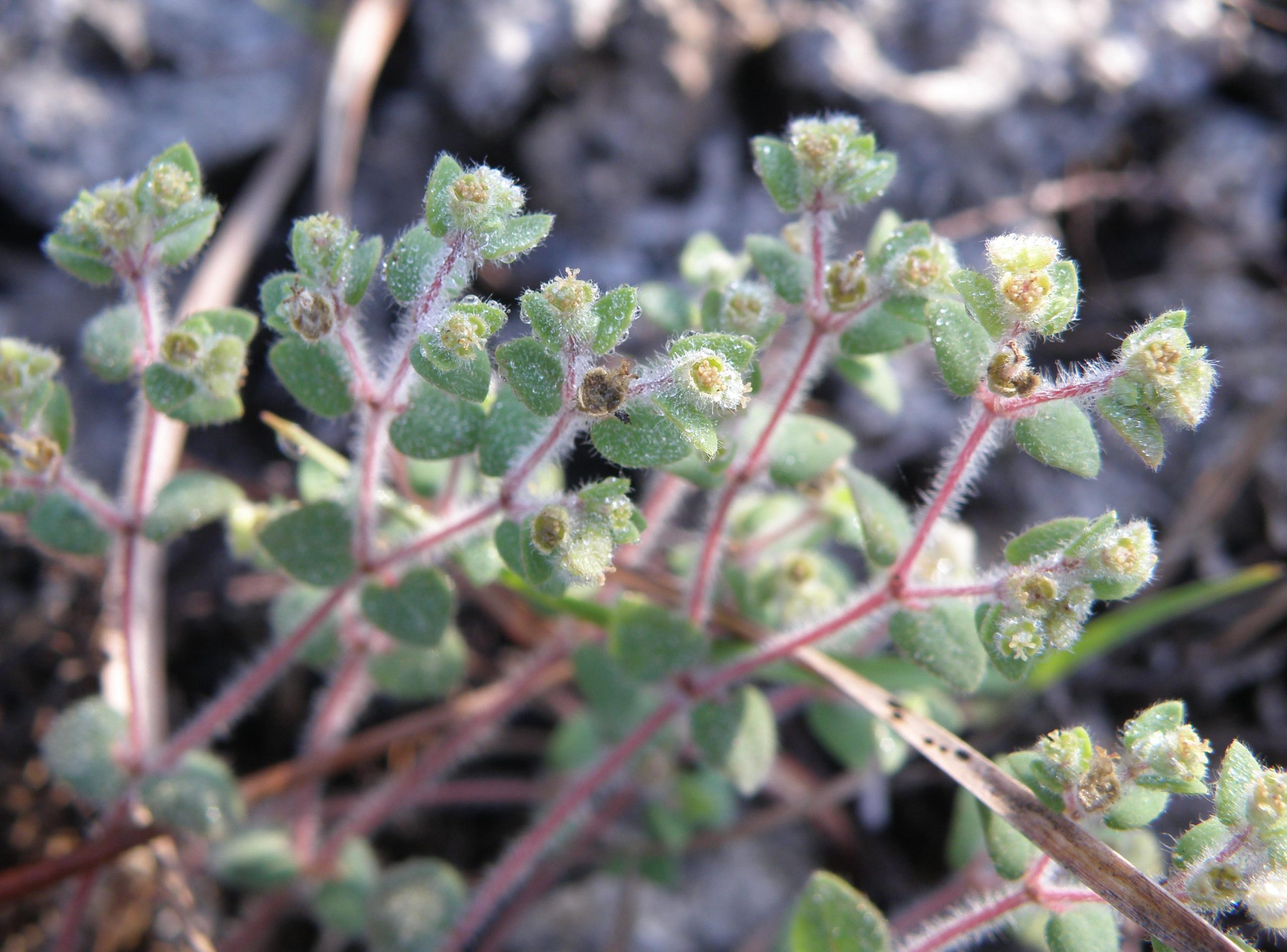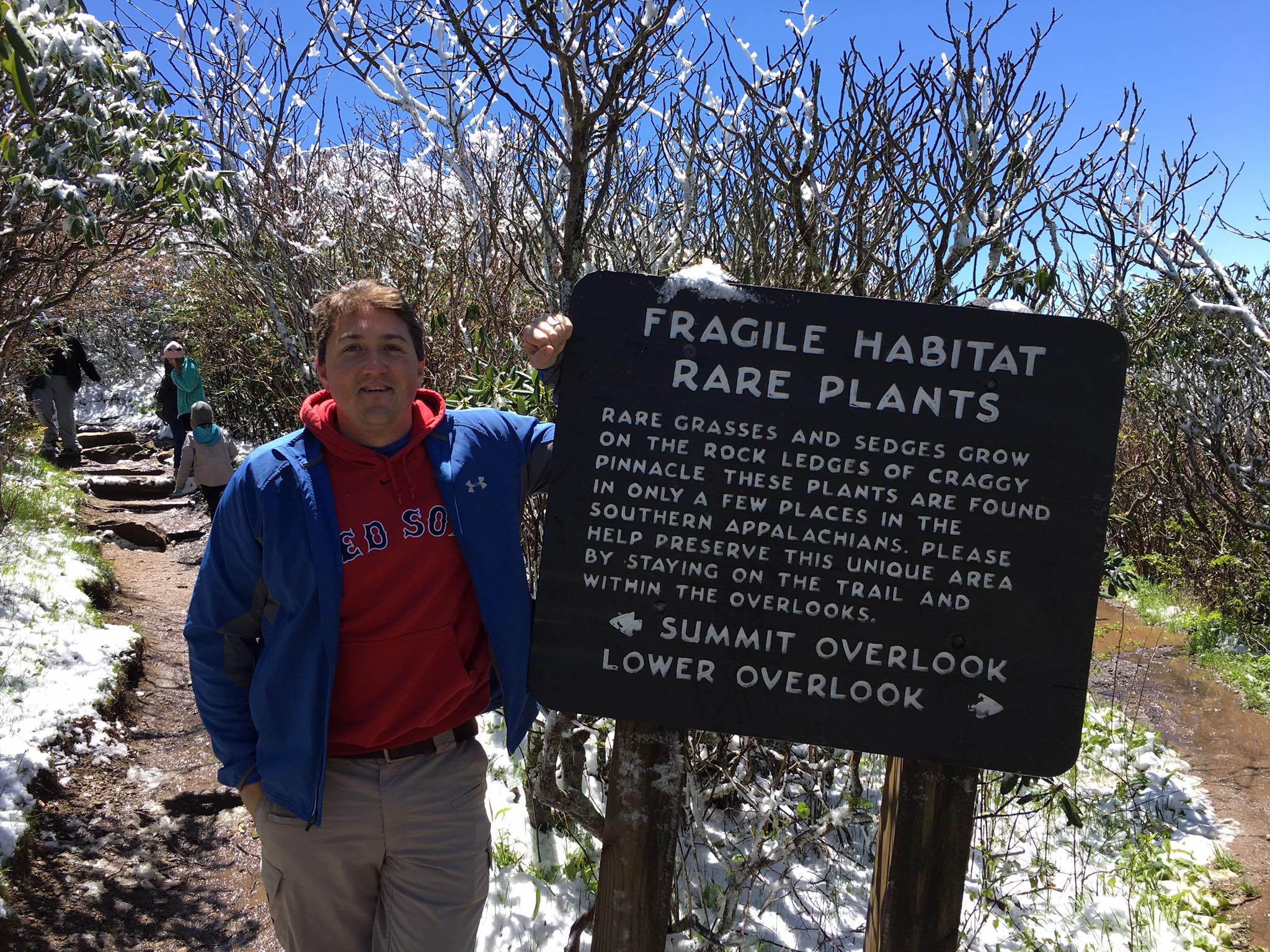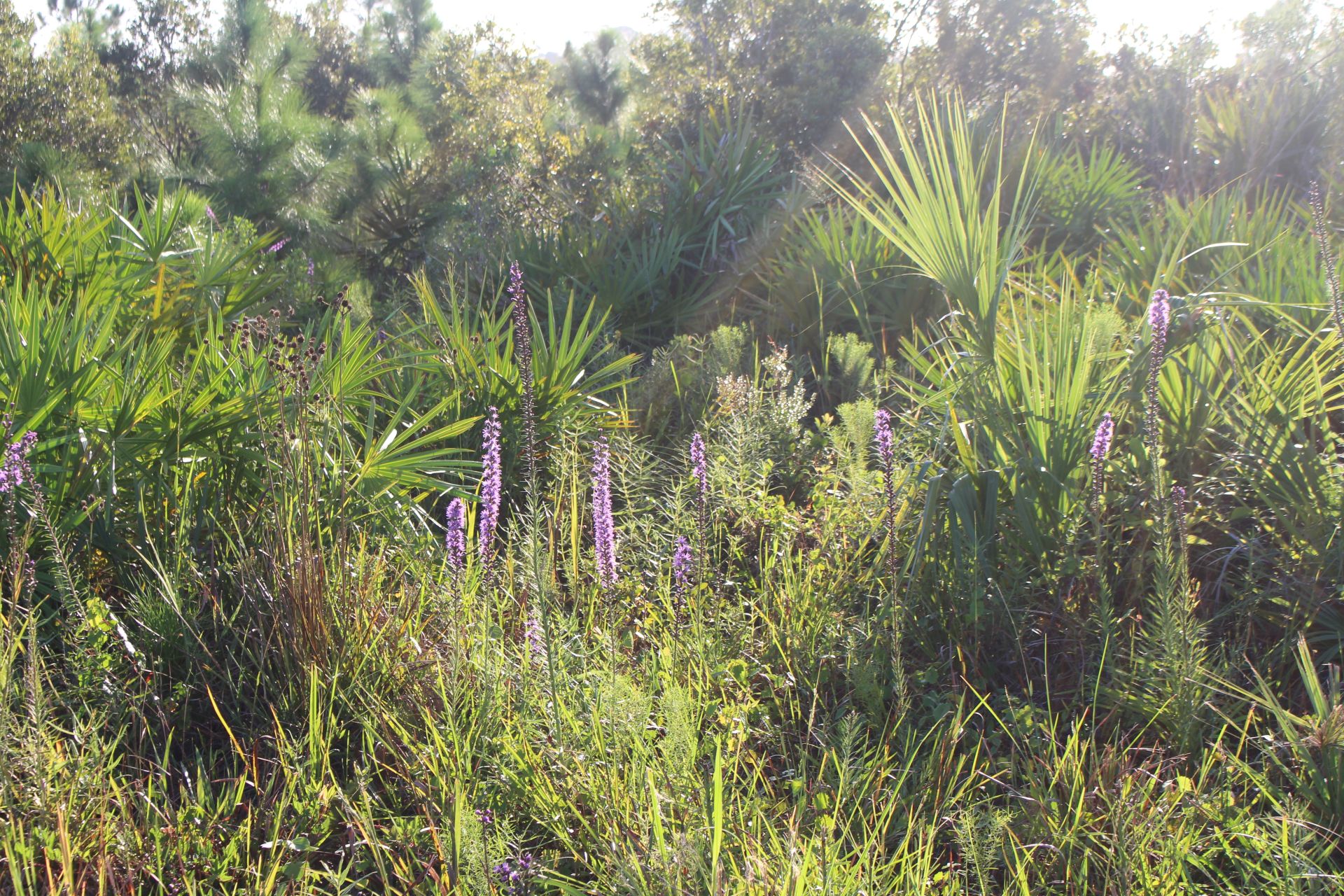SAVE PLANTS
Center for Plant Conservation
April is National Native Plant Month—a time to recognize and celebrate the vital role native flora play in sustaining biodiversity and providing the foundation of healthy ecosystems. In this issue, we highlight the work of the Institute for Applied Ecology (IAE), a CPC Conservation Partner leading important efforts to understand and protect rare native species. Their recent research on the Sevendevils onion (Allium tolmiei var. persimile)—a rare, endemic variety of the more widespread Tolmie’s onion (Allium tolmiei var. tolmiei)—provides critical insights that will guide future conservation actions. We also share a lesson from the Applied Plant Conservation Course created by IAE Founder and Chief Scientist, Dr. Tom Kaye, which emphasizes the importance of native plants and the threats posed by weeds and invasive species that outcompete and threaten them.
As National Native Plant Month draws to a close, CPC reaffirms our year-round commitment to advocate for and advance the conservation of imperiled native flora. Protecting native plants is not just a seasonal focus—it is at the heart of everything we do. We invite you to delve into these features to learn more about dedicated efforts to protect our native plant species —and to join us in celebrating and safeguarding the incredible diversity of plants that sustain life across our planet.
With gratitude,
The CPC National Office Team
Peeling Back the Layers: A Taxonomic Update on the Rare Sevendevils Onion
In southwestern Idaho’s Payette National Forest, an inconspicuous but ecologically significant onion quietly thrives in the region’s wet meadows. Sevendevils onion (Allium tolmiei var. persimile)—a rare, endemic variety of the more widespread Tolmie’s onion (Allium tolmiei var. tolmiei)—has long been a taxonomic puzzle for botanists and land managers alike.
Now, thanks to a collaborative study led by the Institute for Applied Ecology (IAE) in partnership with the U.S. Forest Service, that mystery is starting to unravel.
A Taxonomic Puzzle Rooted in History
First described in 1950 by botanist Marion Ownbey, the Sevendevils onion stood out for one compelling reason: its hexaploid chromosome count—a trait not shared with other varieties of Allium tolmiei. Since then, several dichotomous keys have attempted to distinguish it from other Allium tolmiei varieties based on subtle morphological differences. Features like stamen-to-tepal length ratio, scape height, and leaf length relative to the scape have traditionally guided identification in the field. But how well do these classic characters hold up?
Not well, it turns out.
Putting the Keys to the Test
In 2024, our team visited 45 subpopulations of Sevendevils onion and five populations of Tolmie’s onion (Allium tolmiei var tolmiei) across southwestern Idaho. From over 600 individuals, we collected detailed morphological data and submitted representative samples for flow cytometry to confirm ploidy levels. This gave us a rare opportunity to pair ploidy identity with field characteristics—and test the reliability of existing taxonomic keys.
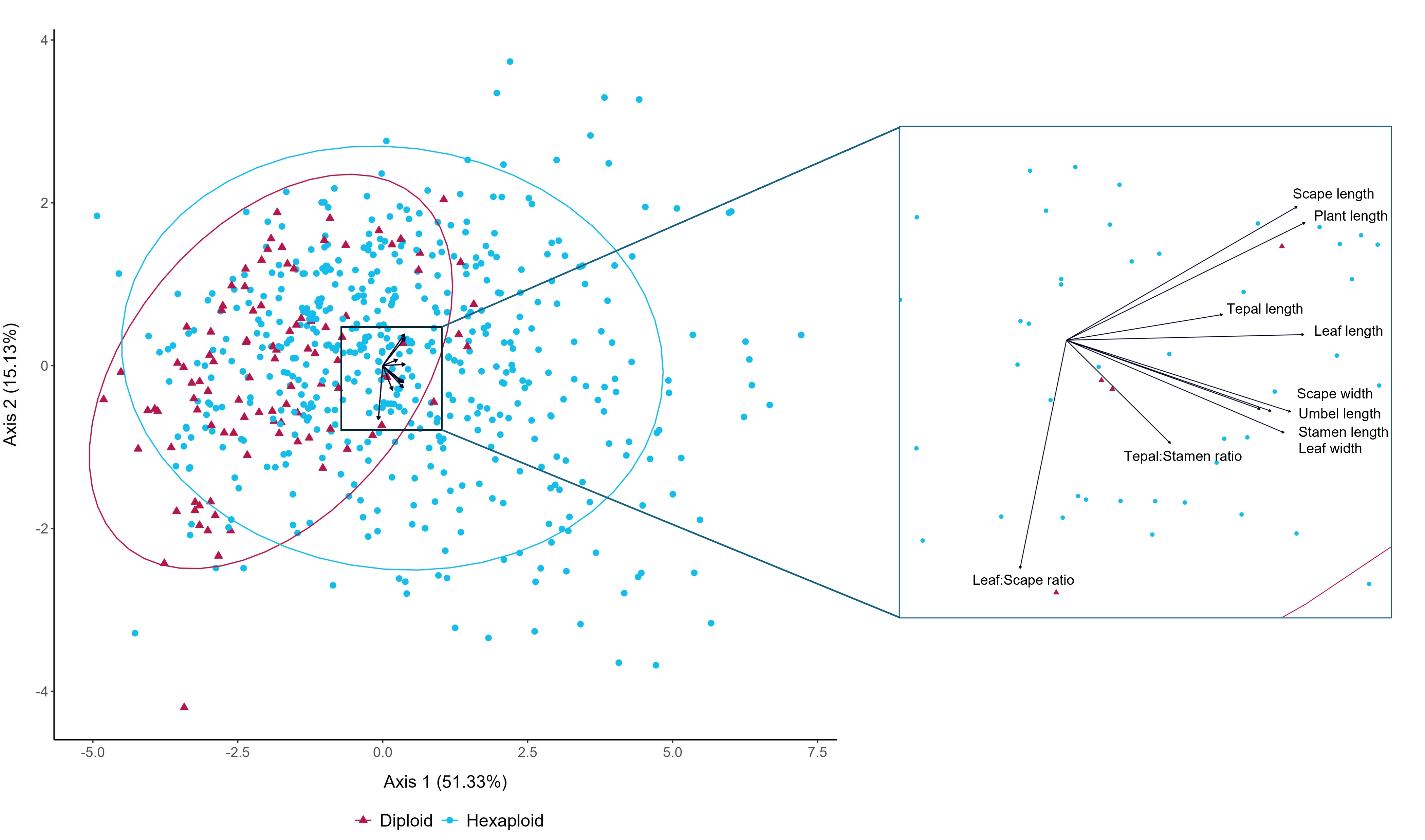
Using multivariate analyses, we assessed how each trait distinguished hexaploids (Sevendevils onion) from diploids (Tolmie’s onion). The following results brought clarity to this question:
- The stamen-to-tepal ratio and scape-to-leaf ratio—longstanding traits in field keys—were not statistically significant in separating the two varieties.
- Plant size traits such as scape length, leaf length, leaf width, and scape width were much more reliable indicators—a common trend seen by polyploids.
- Our Linear Discriminant Analysis model correctly classified over 86% of individuals using size-based traits alone.
- Principal Coordinate Analysis shows that there is notable overlap in morphological features between the two varieties.
Why This Matters for Conservation
This taxonomic nuance has real implications. Sevendevils onion is a Region 4 Forest Service Sensitive Species and ranked S3 (Vulnerable) by the Idaho Natural Heritage Program. This status can limit land use activities such as fuels reduction within the USFS Southwestern Idaho Landscape (SIL) project. Misidentifying Tolmie’s onion as Sevendevils onion could unnecessarily constrain management. Conversely, failing to recognize Sevendevils onion could result in overlooked impacts on a vulnerable species.
Our study suggests that current keys—largely unchanged since 1950—may lead to such errors. A key reevaluation is urgently needed, with greater emphasis on measurable size traits and less reliance on ratios of plant structural measures.
Looking Ahead: A Better Key, a Better Future
In 2025, we’ll expand our sampling of Tolmie’s onion to ensure the model’s geographic robustness and collect more environmental data to refine habitat-based clues. We’ll also reassess Sevendevils onion’s population estimates, currently thought to exceed 460,000 individuals across ~61 element occurrences.
Most importantly, we hope this work informs an updated identification key and supports a possible status reassessment for Sevendevils onion. A more accurate taxonomy will give managers better tools, reduce uncertainty, and help ensure conservation decisions are grounded in solid science.
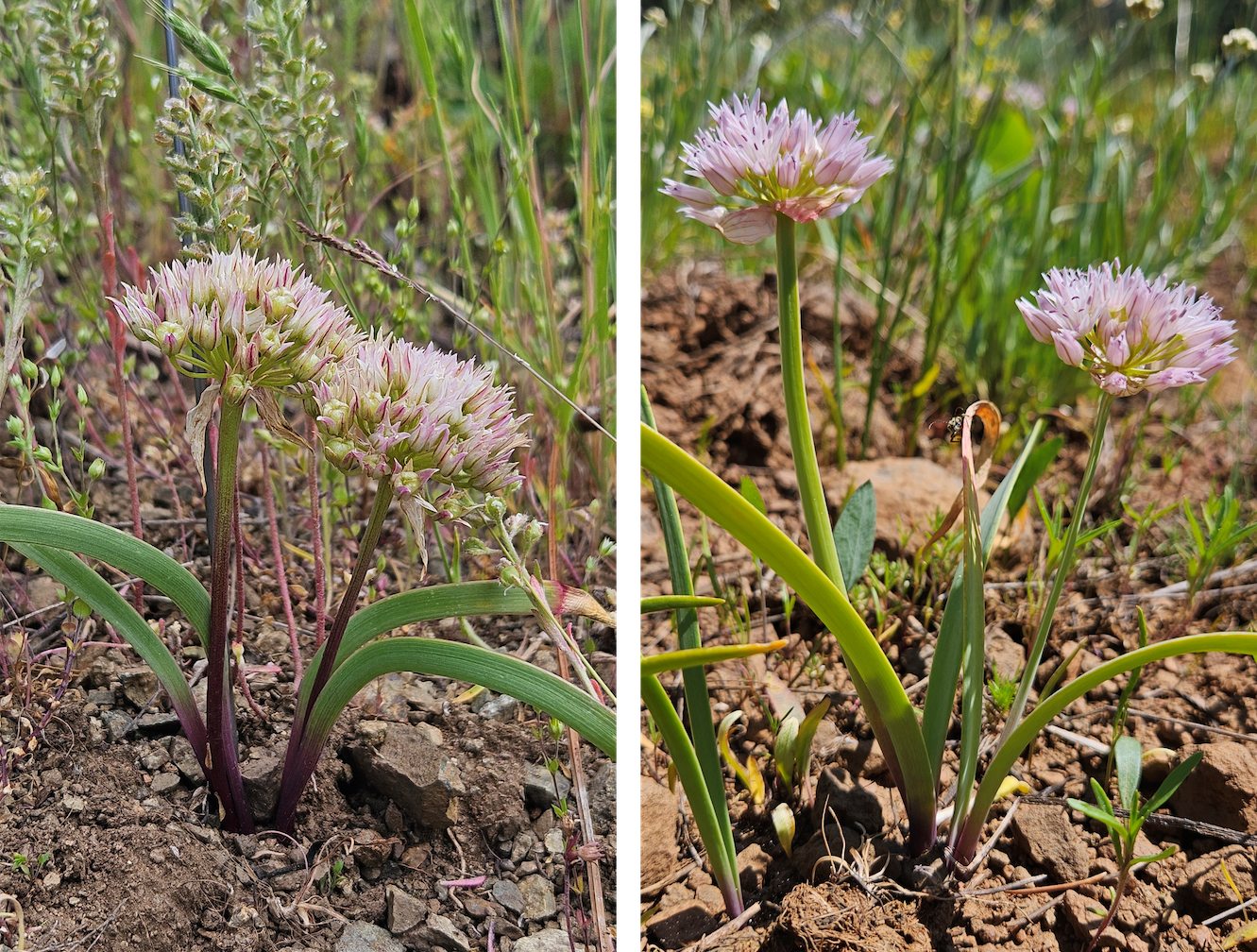
A Community Effort
This work wouldn’t be possible without the dedication of our field teams, the guidance of the Payette National Forest Botany staff, and support from the U.S. Forest Service. We are especially grateful to our partners who helped navigate permits, contributed local knowledge, and assisted with data collection.
By the end of 2025, we aim to deliver a complete reassessment of the sevendevils onion’s status—bringing us one step closer to ensuring its long-term conservation in the beautiful landscapes it calls home
-
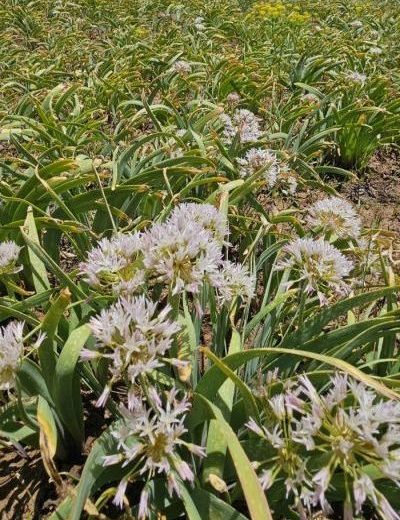
Sevendevils onion (Allium tolmiei var. persimile) across hillside on Payette National Forest. Photo courtesy of the Institute for Applied Ecology. -
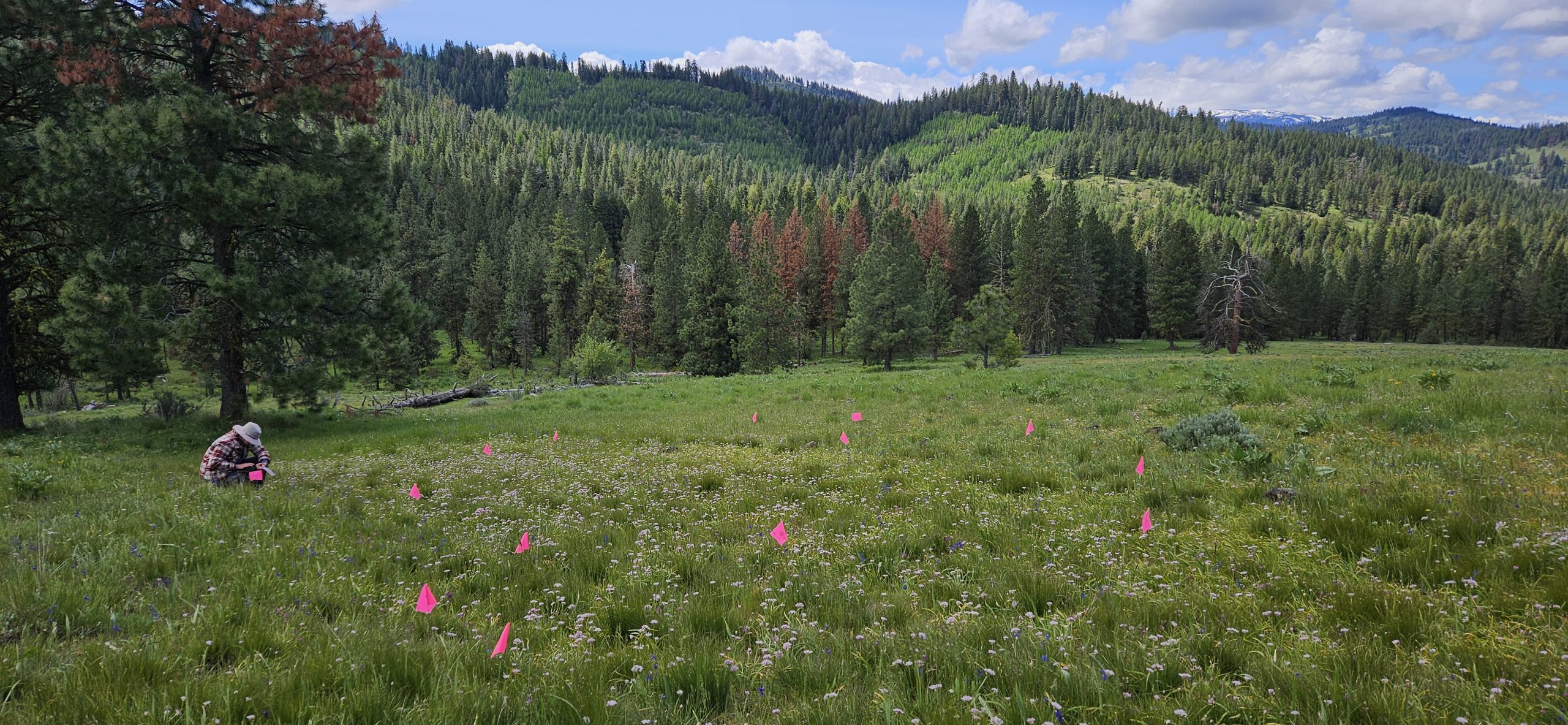
Aynesley Willson collecting morphological data on sevendevils onion at Cow Creek element occurrence (EO). Photo courtesy of the Institute for Applied Ecology. -
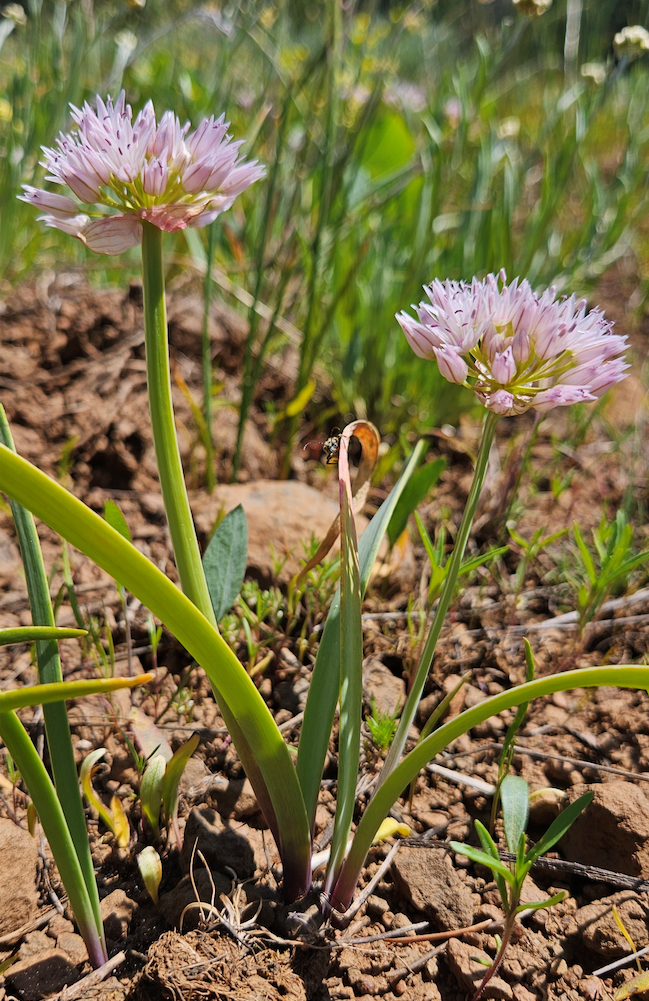
Sevendevils onion (Allium tolmiei var. persimile). Photo courtesy of the Institute for Applied Ecology.
CPC In the News
CPC and several of our Conservation Partners have recently been highlighted in national press, helping elevate the visibility of our shared mission to save rare and endangered plants from extinction.
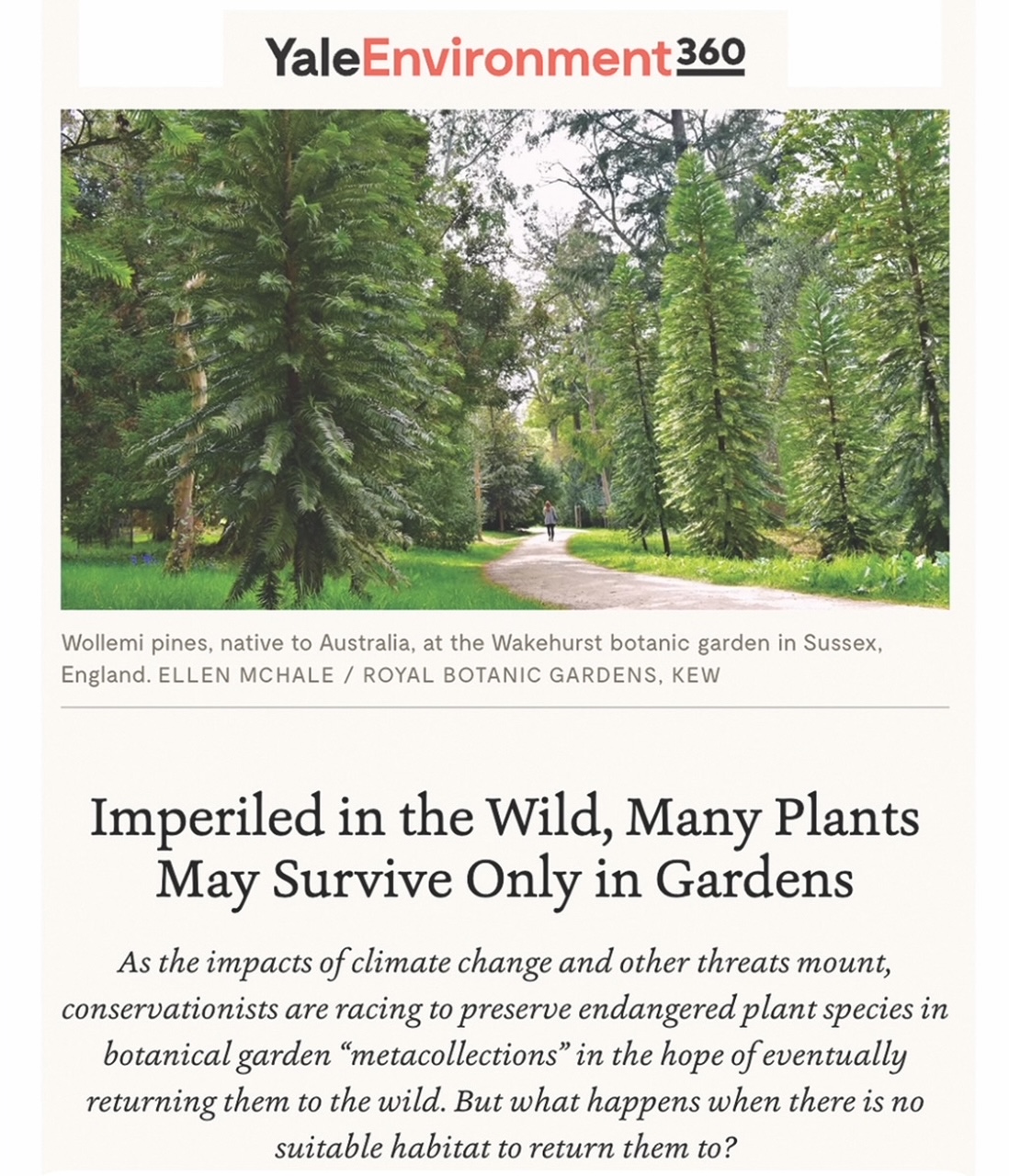
“To safeguard threatened plants, science must unravel the hidden biology of often-persnickety seeds as they age, sleep and awaken.” – Knowable Magazine
Knowable Magazine published a feature on seed banking as a tool to preserve rare plants, showcasing CPC’s leadership in ex situ conservation and quoting CEO Wes Knapp and several CPC Conservation Partners, including Dr. Christina Walters of the National Laboratory for Genetic Research Preservation; Louise Colville of the Millennium Seed Bank at London’s Royal Botanic Gardens, Kew; Dr. Mike Kunz of North Carolina Botanical Garden; Dr. Matthew Albrecht of Missouri Botanical Garden; and Dr. Naomi Fraga of California Botanical Garden. Read the article.
_______________________________________________________________
“As the impacts of climate change and other threats mount, conservationists are racing to preserve endangered plant species in botanical garden ‘metacollections’ in the hope of eventually returning them to the wild. But what happens when there is no suitable habitat to return them to?” – Yale 360
Yale Environment 360 published a deep dive on the value of plant metacollections, quoting CPC’s CEO Wes Knapp and Conservation Partners, Dr. Emily Coffey of Atlanta Botanical Garden; Dr. Valerie Pence of Cincinnati Zoo and Botanical Garden/CREW; and Jennifer Possley of Fairchild Tropical Botanic Garden, while spotlighting the role of CPC in facilitating coordinated collections. Read the article.
Shop for a Cause: CPC Save Plants Merch Shop

We’re thrilled to announce the launch of the Center for Plant Conservation’s first-ever online merchandise store! Hosted by Print Your Cause, the Save Plants Merch Shop features a curated collection of apparel and accessories showcasing CPC’s “Save Plants” message, plant-themed designs, and CPC logo wear.
Now you can show your support for rare plant conservation in style—with every purchase helping to fund our mission to save plants from extinction. Orders are fulfilled directly by Print Your Cause, ensuring you receive high-quality products delivered straight to your door.
Visit the Save Plants Merch Shop!
National Collection Spotlight: Stones River Bladderpod
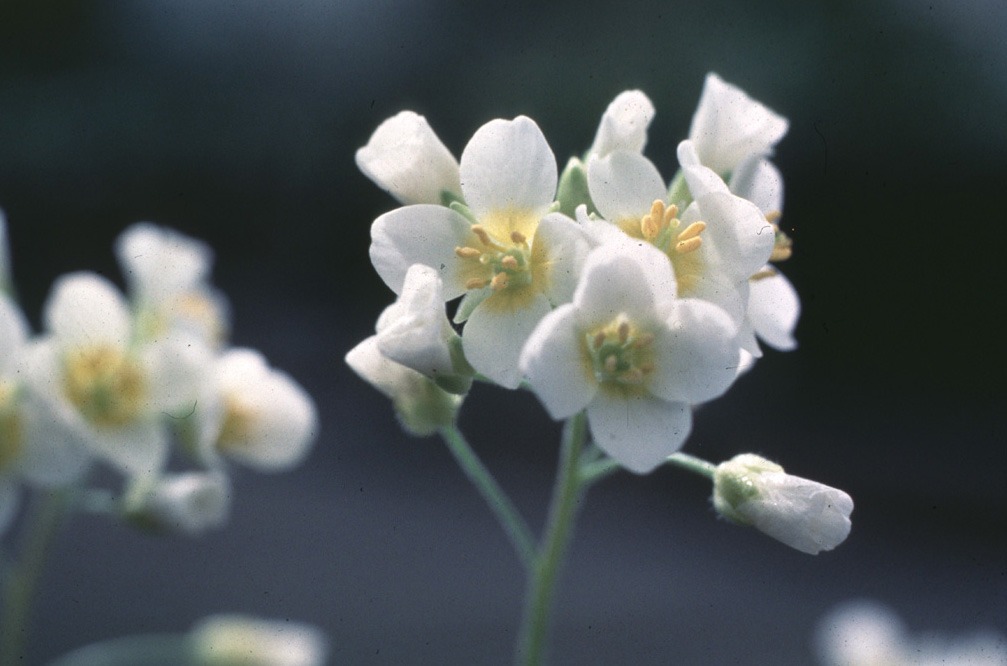
Meet the Stones River Bladderpod (Paysonia stonensis), a critically imperiled species endemic to Rutherford County, Tennessee, found along the floodplains of the Stones River and its tributaries. This rare annual is a showy member of the mustard family and produces lovely, fragrant white flowers.
Stones River Bladderpod requires habitat disturbance in order to complete its life-cycle — a cycle that has been threatened by development. Historically, the floodplain habitat where Stones River Bladderpod was found was maintained by regular flooding, which removed competitive perennial grasses and woody plants. With alterations to the waterways in this region, flooding no longer maintains the habitat this plant needs. Some years, this species is quite abundant locally, but virtually absent in others.
Stones River Bladderpod is stewarded by CPC Conservation Partner Missouri Botanical Garden (MOBOT), and as of February 2025 they hold 8 accessions in their seed bank consisting of 1,912 seeds collected from Rutherford County, Tennessee, and cultivated garden beds.
In 2021, CPC contracted MOBOT to recollect seed from a population currently held in long term orthodox seed storage as part of an IMLS-funded seed longevity experiment. The National Laboratory for Genetic Resources Preservation will evaluate how germination tested viability and RNA Integrity of seed lots decline over time in storage.
Use our Rare Plant Finder Tool to discover which native plants near you are at risk – and which have dedicated conservationists within our network working to safeguard their existence. You can run an advanced search by location, common or scientific name, plant family or type, which CPC institution stewards the species, its legal status, and more criteria. View the plant profiles in our database to learn more about what is being done by conservation scientists to save these plants!
As Seen on the Rare Plant Academy: Native Plants vs. Weeds
CPC’s Applied Plant Conservation Course (APCC) harnesses and presents the knowledge and expertise of those working to safeguard North America’s most imperiled species. This critical work involves developing protocols that restore healthy, diverse populations to nature — and sharing this information with budding plant scientists and professionals.
In Module 1 of the APCC, get started by learning about the dynamics between native plants versus weeds and invasive species, and why native plants are critical to overall ecosystem health in a lesson developed by Dr. Tom Kaye of the Institute for Applied Ecology. We invite you to learn more about the science of rare plant conservation and what is being done to secure native flora for future generations.
This professional development resource is free and open to all skill levels.
Enroll in the Applied Plant Conservation Course!
Get Updates
Get the latest news and conservation highlights from the CPC network by signing up for our newsletters.
Sign Up Today!Ways to Help CPC

Conservation Advocacy Initiatives
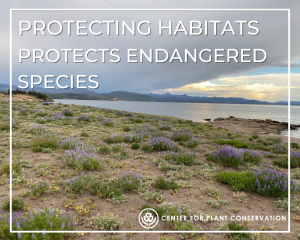
Habitat loss and degradation are the leading causes of extinction for both plants and animals. Recently proposed changes to the Endangered Species Act (ESA) would significantly limit the ESA’s power to protect and preserve critical habitats that endangered plants and animals rely on for their survival by removing habitat protections from the definition of “harm”—making it easier to log, mine, build on, or otherwise modify the habitats endangered species need to survive. Under this proposed change, only actions that directly injure or kill wildlife would be prohibited, leaving the habitats they depend on for survival vulnerable and thus impairing a species’ ability to feed, reproduce, shelter, and thrive.
Many federally endangered and rare plant species, such as the Tiburon mariposa lily (Calochortus tiburonensis), Oahu Lobelia (Lobelia oahuensis), Tiehm’s Buckwheat (Eriogonum tiehmii), and Yellowstone sand-verbena (Abronia ammophila), can only be found in a single habitat, or very limited habitat range—and nowhere else in the entire world. If their respective habitats are lost, we could lose these species forever. We must protect these habitats to protect our most threatened species.
As an organization dedicated to preventing plant extinction, we urge you to comment and contact your representatives to oppose this proposed change to the Endangered Species Act. We must use our collective voice, expertise, and resources to protect these species!
- The public now has less than 30 days to comment on this proposed change to the ESA – leave a comment here.
- Speak up now to protect endangered species and the habitats they call home – call your representatives and urge them to oppose this change to our nation’s most important wildlife protection law.

Donate to Save Endangered Plants
Without plants, life as we know it would not be possible. Yet two in five of the world’s plants are at risk of extinction. More than ever before, rare plants need our help!
When you support the Center for Plant Conservation (CPC) by making a charitable gift, you help advance our mission to safeguard rare plants by advancing science-based conservation practices, connecting and empowering plant conservationists, and inspiring all to protect biodiversity for future generations.
Your donation makes it possible for CPC to offer educational resources that support and train our botanical community, advance science-based conservation research, maintain the National Collection of Rare and Endangered Plants, and so much more.
The Center For Plant Conservation is a 501 (c) (3) non-profit organization (EIN# 22-2527116). Your gift to the Center for Plant Conservation is 100% tax deductible.
Your gift ensures CPC’s meaningful conservation work will continue. Together, we save more plants than would ever be possible alone—ensuring that both plants and people thrive for generations to come. We are very thankful to for all that you do to help us Save Plants!
Donate to CPC
Thank you for helping us save plant species facing extinction by making your gift to CPC through our secure donation portal!
Donate Today